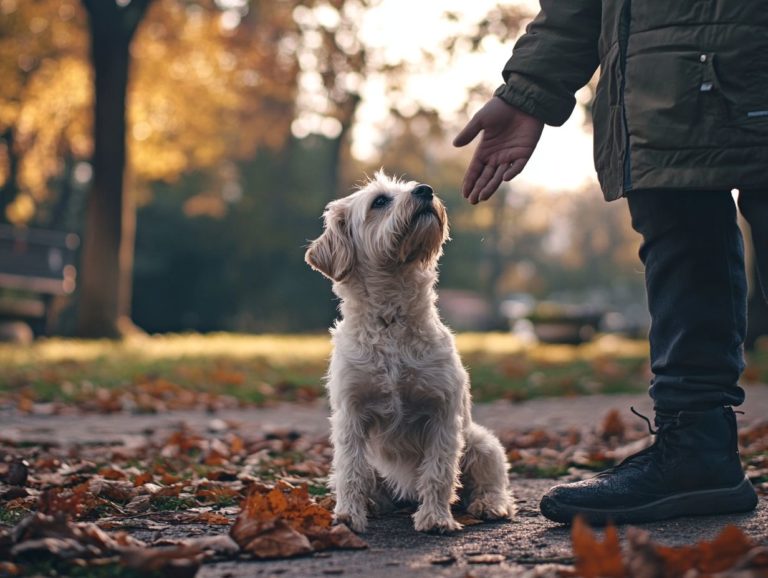Effective Techniques for Obedience Training
Obedience training is a cornerstone of a happy and harmonious relationship between you and your dog. It fosters good behavior, enhances communication, and strengthens the bond you share with your furry friend.
This article explores the myriad benefits of obedience training, guiding you from mastering basic commands to using positive reinforcement techniques. You ll also find insights into tackling common behavioral issues and exploring advanced training for specific purposes, such as service or working dogs.
Discover how effective training can transform your dog into a well-mannered companion, enhancing your life together in ways you never thought possible.
Contents
- Key Takeaways:
- The Importance of Obedience Training
- Basic Obedience Commands
- Positive Reinforcement Techniques
- Addressing Common Behavioral Issues
- Advanced Obedience Training
- Training for Specific Purposes
- Frequently Asked Questions
- What are some effective techniques for obedience training?
- How does positive reinforcement work in obedience training?
- Can clicker training be used for obedience training?
- Why is consistency important in obedience training?
- How can I make obedience training fun for my dog?
- Are there any common mistakes to avoid during obedience training?
Key Takeaways:
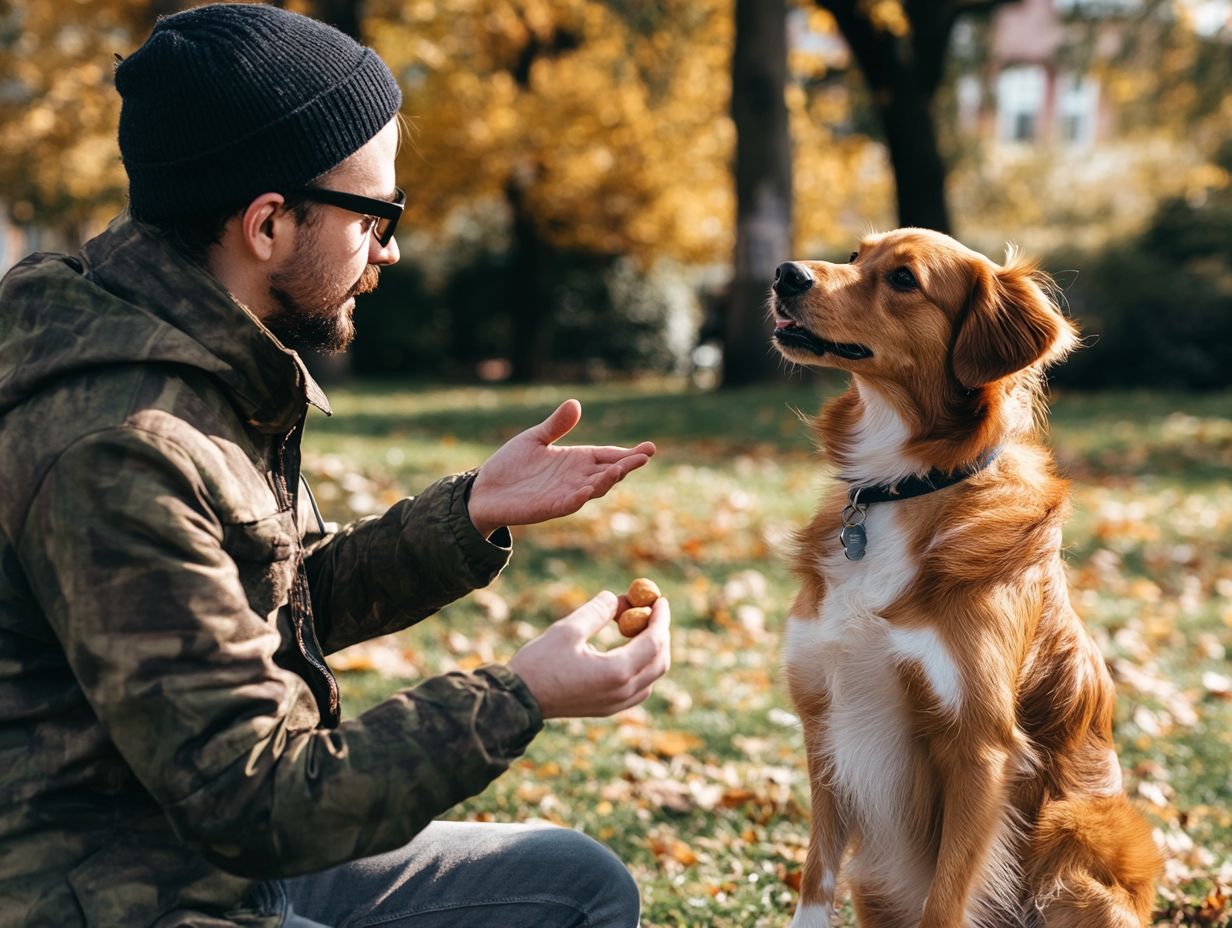
- Obedience training is crucial for both dogs and owners, leading to improved behavior and communication.
- Consistent teaching and reinforcement of basic commands, along with positive reinforcement techniques, are key to successful obedience training.
- Addressing common behavioral issues and using advanced training techniques, such as reward-based training, can enhance a dog’s obedience skills for specific purposes.
The Importance of Obedience Training
Obedience training is essential for cultivating a solid bond between you and your dog. It enhances communication and fosters a harmonious living environment.
By integrating well-planned training sessions into your routine, you can tackle various behavioral challenges and instill desirable obedience techniques. This also deepens your dog’s understanding of commands. Consistent communication during these sessions is key to success.
The American Kennel Club and the AKC GoodDog! Helpline are fantastic resources that offer support tailored to both novice and seasoned trainers, including tips for puppy classes and training rewards.
Benefits for Dogs and Owners
The benefits of obedience training extend beyond teaching your dog commands; they significantly enhance your pet’s behavior and your overall experience as an owner.
Using positive reinforcement techniques strengthens the bond with your furry companion, fostering better communication. Improved behavior often means fewer instances of jumping on guests or excessive barking, creating a more pleasant atmosphere for everyone.
Safety is also crucial; a well-trained dog is less likely to dart into traffic or engage in aggressive encounters with other animals. Structured training not only sharpens your dog’s intelligence but also provides mental stimulation, keeping their minds active and reducing anxiety.
In essence, the rewards of obedience training are multifaceted. They enrich daily life for both you and your beloved pet in countless ways. Using training rewards effectively can enhance this experience further.
Basic Obedience Commands
Teaching basic obedience commands serves as the cornerstone of your dog training journey. It establishes a framework that fosters effective communication, helping your dog grasp new commands with ease.
This foundational step not only enhances your training experience but also strengthens the bond between you and your canine companion.
Teaching and Reinforcing Key Commands
Teaching and reinforcing key commands requires a step-by-step method that integrates obedience techniques with positive reinforcement strategies. This ensures effective learning and retention.
Consistency is crucial; using the same cues and signals helps your dog grasp commands more readily. Incorporating clicker training, a method that uses a sound to mark good behavior, can elevate the experience. This provides immediate feedback, clearly connecting the action with a reward. Alongside verbal praise, treats or toys can serve as excellent motivators, fostering a positive environment that encourages the repetition of desired behaviors.
Regular practice sessions, especially in varied settings, will strengthen your dog’s understanding, ensuring that commands are recognized regardless of surroundings. Your patience and encouragement are vital for building trust and responsiveness.
Positive Reinforcement Techniques
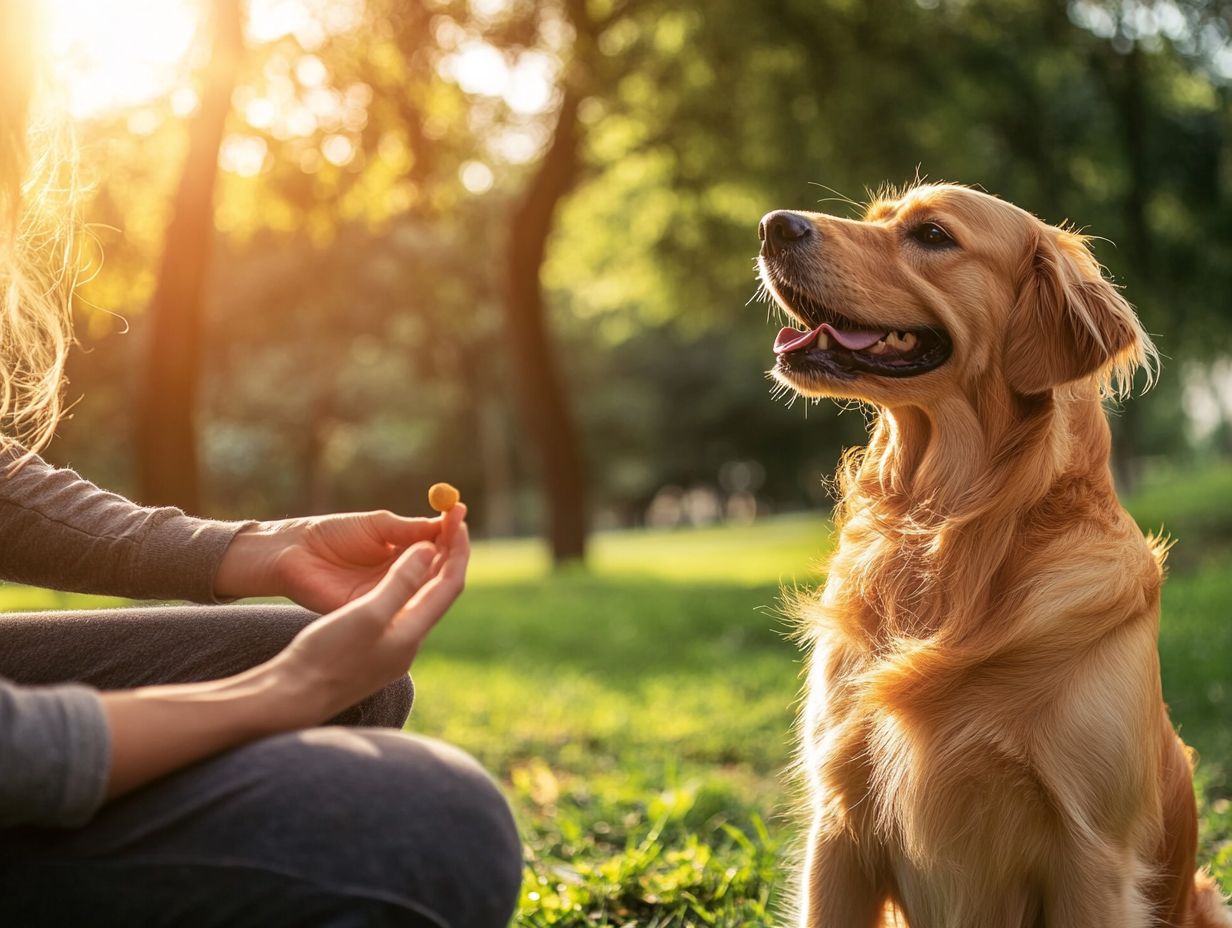
Positive reinforcement techniques are the core of good dog training. They use reward-based methods to encourage desirable behaviors while nurturing a deep bond with your dog. These techniques are especially beneficial for addressing behavioral problems.
These strategies also enhance your training experience and strengthen the relationship you share with your dog.
Reward-Based Training Methods
Reward-based training methods harness various forms of rewards, such as treats and praise, to effectively motivate your dog and reinforce positive behaviors.
By employing techniques like clicker training, you can establish a clear communication channel with your dog. Clicker training involves using a small handheld device that emits a distinct sound whenever your dog performs a desired action, allowing for immediate reinforcement.
To implement this method, start by associating the click sound with a treat. Simply click and reward your dog right away. The most effective rewards for this training often include high-value treats, like small pieces of meat or cheese. Praise and playtime can work wonders, too.
This approach not only enhances your dog s learning but also deepens the bond between you and your dog.
Addressing Common Behavioral Issues
Addressing common behavioral issues is an important part of dog training that demands a keen understanding of dog psychology. By cultivating an environment that fosters effective learning, you can significantly reduce the likelihood of mistakes during the training process.
Solutions for behavioral problems like barking and chewing can be effectively implemented through consistent communication and the use of appropriate training techniques, including aversive-based methods when necessary. This includes using techniques that may discourage undesirable behaviors.
To tackle these issues, explore a variety of behavioral modification strategies that leverage positive reinforcement, such as rewarding calm behavior with treats or praise. For excessive barking, identify the triggers and gradually desensitize your dog over time.
Regular exercise is essential. It helps manage your dog s energy levels and reduces those pesky instances of unwanted chewing. If certain behaviors persist despite your best efforts, consulting a professional trainer can provide you with personalized guidance tailored to your dog s needs.
Your goal? Build a trusting relationship that lasts! Use physical corrections sparingly and with care, ensuring they are humane and do not instill fear.
Advanced Obedience Training
Advanced obedience training elevates your dog s abilities, honing their intelligence with intricate commands and specialized activities like agility and scent work. This level of training sharpens their skills and fosters a deeper bond between you and your dog, paving the way for an extraordinary partnership filled with challenges and achievements.
Building on Basic Commands
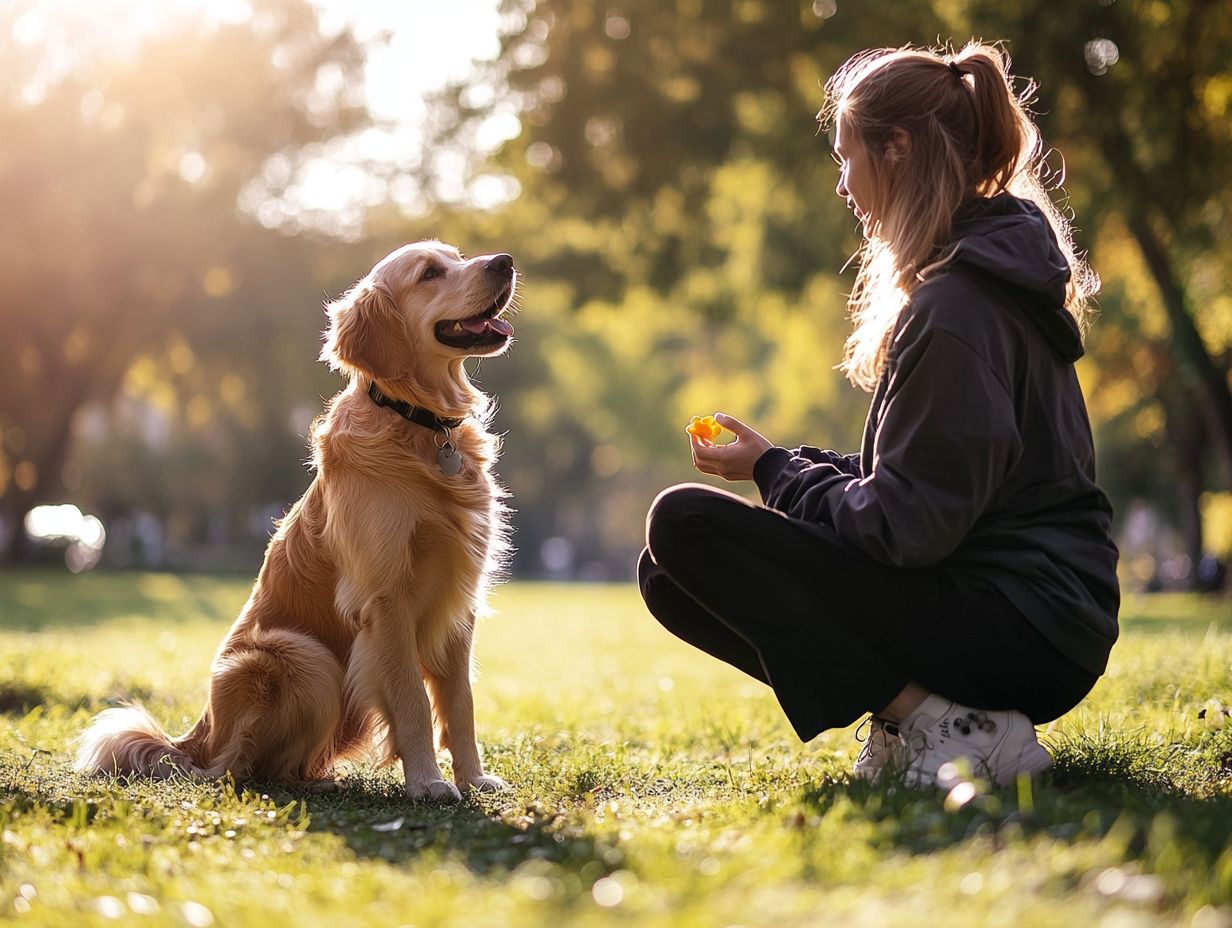
Building upon basic commands is essential for advancing your dog’s training. Introducing new and challenging commands will enhance their obedience techniques and enrich their overall learning experience.
This progression keeps the training dynamic and deepens the bond between you and your dog. To effectively implement new commands, remain patient and consistent, using positive reinforcement methods like treats or praise after each successful attempt.
Engage your dog through interactive and varied activities such as agility courses or mental stimulation games. This significantly sustains their focus and motivation during training sessions. Over time, gradually increase the complexity of commands to sharpen their skills and solidify their understanding, leading to heightened obedience and responsiveness.
Start training today and watch your dog thrive!
Training for Specific Purposes
Training for specific purposes, like preparing service dogs or working dogs, demands specialized techniques that are thoughtfully crafted to address the unique requirements of their roles and responsibilities, highlighting the importance of knowing how dogs think.
This tailored approach equips each dog with the skills and understanding needed to succeed.
This training builds a strong bond between you and your canine companion. It also prepares the dog to navigate various environments and situations with confidence. Skills like socialization, recall, and focus form the bedrock of their training, enabling them to perform their duties reliably.
Address behavioral issues quickly to ensure your dog stays well-adjusted and responsive in high-pressure situations. By emphasizing positive behaviors while gently correcting undesirable ones, you can cultivate a harmonious working relationship that ultimately enhances the dog’s effectiveness in their service roles.
Frequently Asked Questions
Here are some common questions about obedience training for service and working dogs.
What are some effective techniques for obedience training?
There are several effective techniques for obedience training, including positive reinforcement, clicker training, and consistency. Incorporating effective techniques for training anxious puppies can also enhance your approach, as can training tips from experts.
How does positive reinforcement work in obedience training?
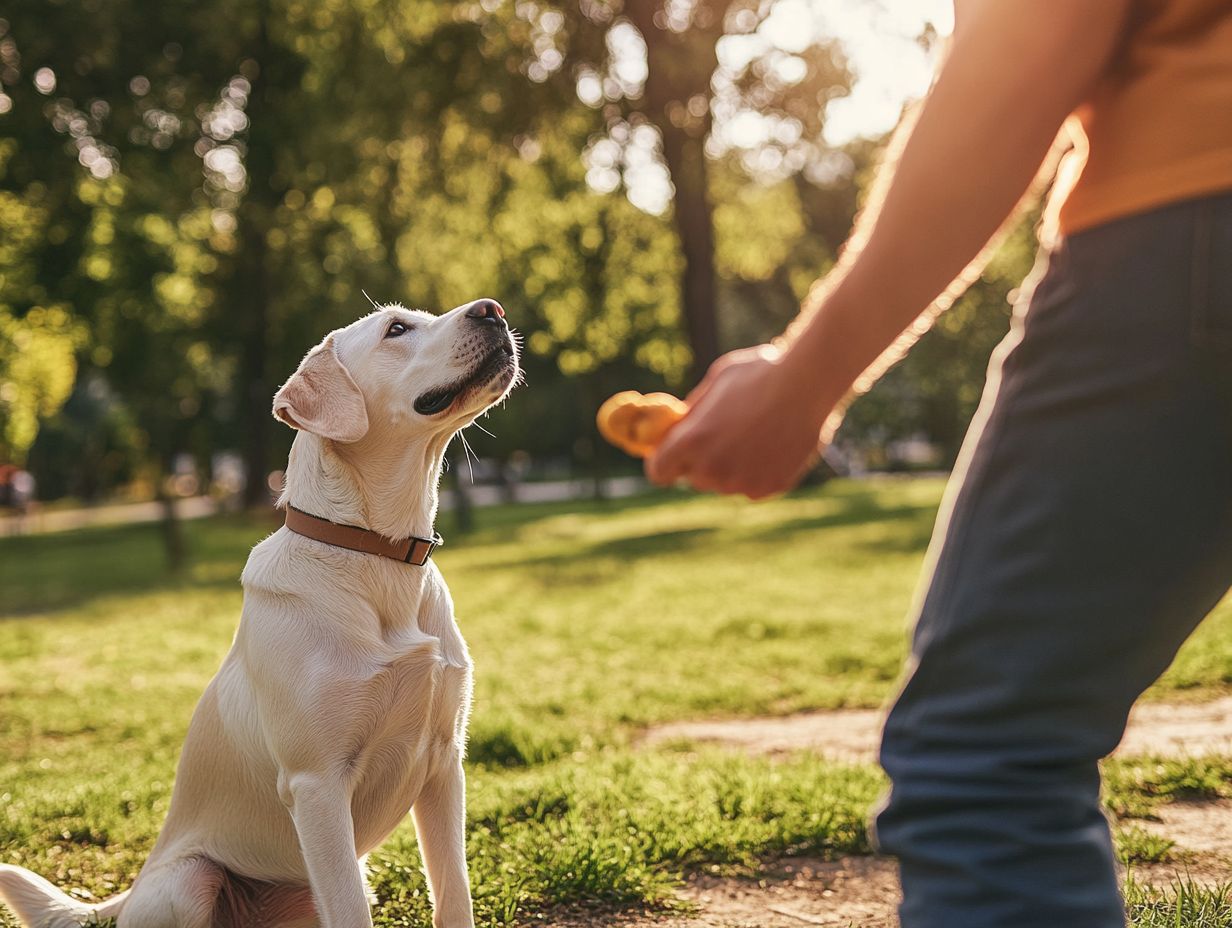
Positive reinforcement involves rewarding your dog for desirable behaviors, such as following commands or exhibiting good behavior. Understanding dog intelligence can help you choose the right rewards.
Can clicker training be used for obedience training?
Yes, clicker training can be a very effective technique for obedience training. It involves using a clicker to mark desirable behaviors and then rewarding your dog for those behaviors, especially when learning new commands.
Why is consistency important in obedience training?
Consistency is important in obedience training because it helps your dog understand what is expected of them and reinforces the behaviors you are trying to teach. Animal behaviorists emphasize that a well-structured training environment can aid in maintaining this consistency.
How can I make obedience training fun for my dog?
You can make obedience training fun for your dog by using positive reinforcement, incorporating games like fetch and play into training sessions, and keeping training sessions short and enjoyable. This approach is beneficial for both canine intelligence and the bond between the dog owner and their pet.
Are there any common mistakes to avoid during obedience training?
Yes, some common mistakes to avoid during obedience training include using punishment or harsh methods, being inconsistent with commands, and not providing enough mental and physical stimulation for your dog. Additionally, training mistakes can be minimized by utilizing resources such as the AKC GoodDog! Helpline or enrolling in training classes.





